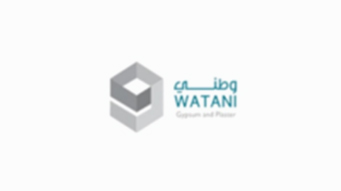
Effect of water treatment on Sodium absorption ratio SAR
Increasing SAR damages the soil surface, and has many negative effects on food crops. Therefore, water treatment in this case is a necessity.
The effect of increasing SAR levels
Two cases occur:
- The soil becomes salty around the roots of the plant.
- The soil surface becomes less permeable.
In either case, the plants suffer from water deprivation due to sodium reactions in the soil.
What is the sodium absorption ratio (SAR)?
Saline soils consist of copious amounts of sodium in the soil that attracts water molecules and removes water intended for the roots. Although the soil may appear wet on the surface, the soil around the plant’s roots is full of salt, which sucks water away from the plant.
The effects of increasing the rate of sodium absorption
The danger of sodium consists of the buildup of salt on the surface of the soil which makes it difficult for water to seep into the roots of the plant.
Solutions
Water treatment systems are recommended to ensure that SAR levels are maintained and balanced to maintain soil health in order to produce suitable products. This may happen by filtering particulates and salts from the source water with Reverse Osmosis.
Reverse Osmosis system
Reverse osmosis systems are known for their ability to purify water by filtering out almost all particles, dissolved solids, and salts up to 97%. This water treatment process involves a pressure-driven water source that filters the majority of contaminants including sodium through a reverse osmosis membrane. This system is designed to prevent the potential adverse effects of water pollution when using water. In this case, the RO system will ensure that the dissolved solids levels remain low which will help maintain a balanced sodium absorption level.
Building a plant based on reverse osmosis technology requires a team of experts and technicians to ensure the quality of all parts, professionalism, and adherence to all installation and maintenance schedules.
Challenges
The sodium absorption ratio refers to the ratio of sodium to calcium and magnesium in the soil due to their antagonistic chemical effects. Maintaining the chemical composition of the soil is a critical component of maintaining and healthy plants and crops. However, it can often be overlooked and not taken into more serious consideration when efforts are made to ensure plant or crop sustainability. Sodium can build up slowly in the soil; one might not even notice that their entire field has dried up.
Salinity and sodium are two issues that occur in terms of SAR. Measurements such as total dissolved solids (TDS) and electrical conductivity (EC) help identify dangerous problems that contribute to excess SAR. Total Dissolved Solids (TDS) measure the amount of particulate matter, pollutants, and salts in water in parts per million (PPM). When TDS levels are high, this indicates a higher number of salts associated with the SAR level. In terms of electrical conductivity, when the EC is low, the SAR is relatively low. When EC levels are high (whether there is elevated sodium or not), the SAR level will be high. The problem with high SAR levels is plant growth and survival.
Advantages of reducing SAR
- Increase product productivity
- Healthy soil
- Lowers Total Dissolved Solids (TDS)
- Equilibrate electrical conductivity (EC)

























